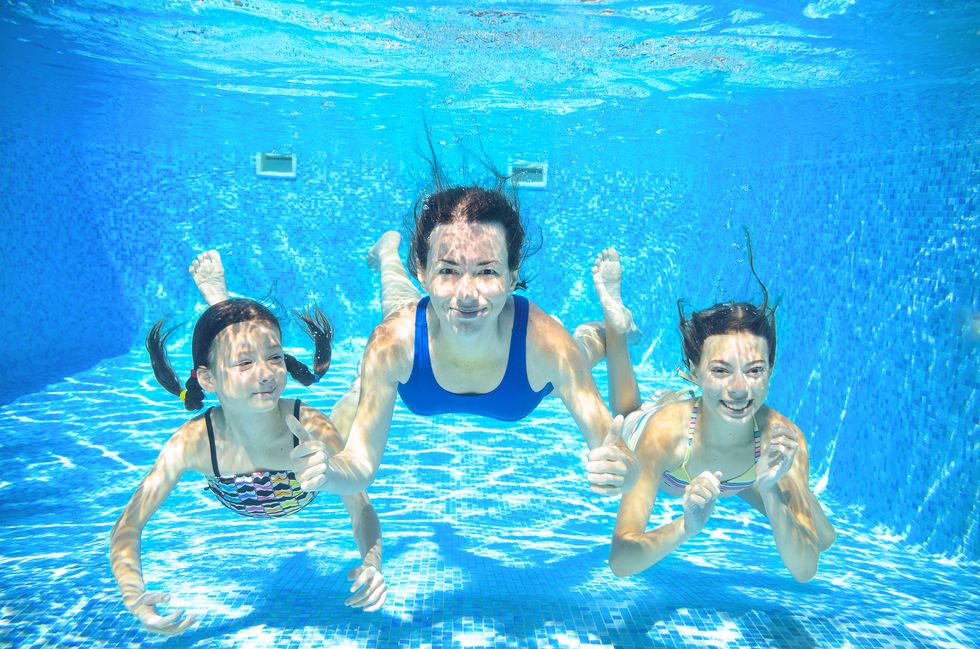
iStock.com/JaySi
Rise in Pool-Linked Infection
Outbreaks of a diarrhea-causing parasitic infection have doubled in recent years.
May 20, 2017
Jun 08, 2023

Learn about our editorial policies

THURSDAY, May 18, 2017 (HealthDay News)—Families seeking to cool off don't expect to pick up a nasty infection. Yet, outbreaks of a diarrhea-causing parasitic infection have doubled in recent years at swimming pools and water playgrounds in the United States, health officials warn.
At least 32 outbreaks of cryptosporidiosis were reported in 2016, compared with 16 outbreaks in 2014, according to a new report from the U.S. Centers for Disease Control and Prevention.
Crypto is the most common cause of diarrhea, the CDC says. It spreads when people come in contact with the feces of an infected person.
Otherwise healthy people can be sick for up to three weeks with watery diarrhea, stomach cramps, nausea or vomiting, the CDC warns. The infection can become life-threatening in people with compromised immune systems.
The cause? Adults or children sick with crypto-caused diarrhea are swimming in public pools despite their illness and further spreading the parasite, said Michele Hlavsa, chief of the CDC's Healthy Swimming Program.
During a diarrheal incident, "a typical person who's sick with Cryptosporidium can release 10 million to 100 million oocysts, which is the infectious stage of crypto," Hlavsa said. "Swallowing 10 or fewer of these oocysts can make you sick. Looking at a typical-sized pool, even swallowing a mouthful of water can make us sick."
People also can contaminate pool water with crypto through physical contact, said Lilly Kan, senior director of infectious disease and informatics with the National Association of County & City Health Officials (NACCHO).
For example, parents might spread the parasite if they change a child's crypto-contaminated diaper and then hop in the water without properly washing their hands, Kan said.
Hlavsa explained that crypto is resistant to chlorine, and can survive up to 10 days in even properly chlorinated pool water.
"The oocysts have a hard outer shell, and that makes them very resistant to chemical disinfectants," Hlavsa said.
Last year's crypto outbreaks numbered the highest this decade, according to the CDC report.
However, experts can't tell whether more outbreaks are actually occurring or public health officials have gotten better at detecting them, Hlavsa said.
The findings were published May 19 in the CDC's Morbidity and Mortality Weekly Report (MMWR).
The report cited some state-specific outbreaks:
People should not swim if they are sick with diarrhea, and they should keep children with diarrhea out of the pool, Hlavsa said. If they have been diagnosed with crypto, they should wait two weeks after diarrhea has stopped to go swimming.
Parents should take kids on bathroom breaks often, and shouldn't count on swim diapers protecting other swimmers from exposure to a child's diarrhea, Hlavsa added.
"Swim diapers do not contain diarrhea," she said. "If water is getting into that diaper, then water is getting out."
To protect themselves, swimmers should avoid swallowing any pool water, and make sure that kids don't have pool toys that encourage swallowing the water, Hlavsa said.
A second report in the MMWR noted another potential hazard of public pools—inhalation of toxic chlorine gas.
Between 2008 and 2015, mishandled pool chemicals harmed about 190 people in California in nine separate incidents, the report noted. Symptoms of inhaled chlorine gas included vomiting, coughing and eye irritation.
Workers need to read the label on pool chemicals, follow the directions and wear proper safety equipment, Hlavsa said.
In addition, Jennifer Li, senior director of environmental health for NACCHO, said that employees should clear the pool area before starting recirculation pumps, because introduction of concentrated pool chemicals can cause a sudden release of chlorine gas.
Managers of pools and water parks need to make sure employees are trained, Li added.
"There's a lot of seasonal staff at these public venues, and they need to be properly educated before they're out there doing pool maintenance," Li said.
SOURCES: Michele Hlavsa, RN, MPH, chief, Healthy Swimming Program, U.S. Centers for Disease Control and Prevention; Lilly Kan, MPH, senior director, infectious disease and informatics, National Association of County & City Health Officials; Jennifer Li, MHS, senior director, environmental health, National Association of County & City Health Officials; May 19, 2018, Morbidity and Mortality Weekly Report
Copyright © 2017 HealthDay. All rights reserved.